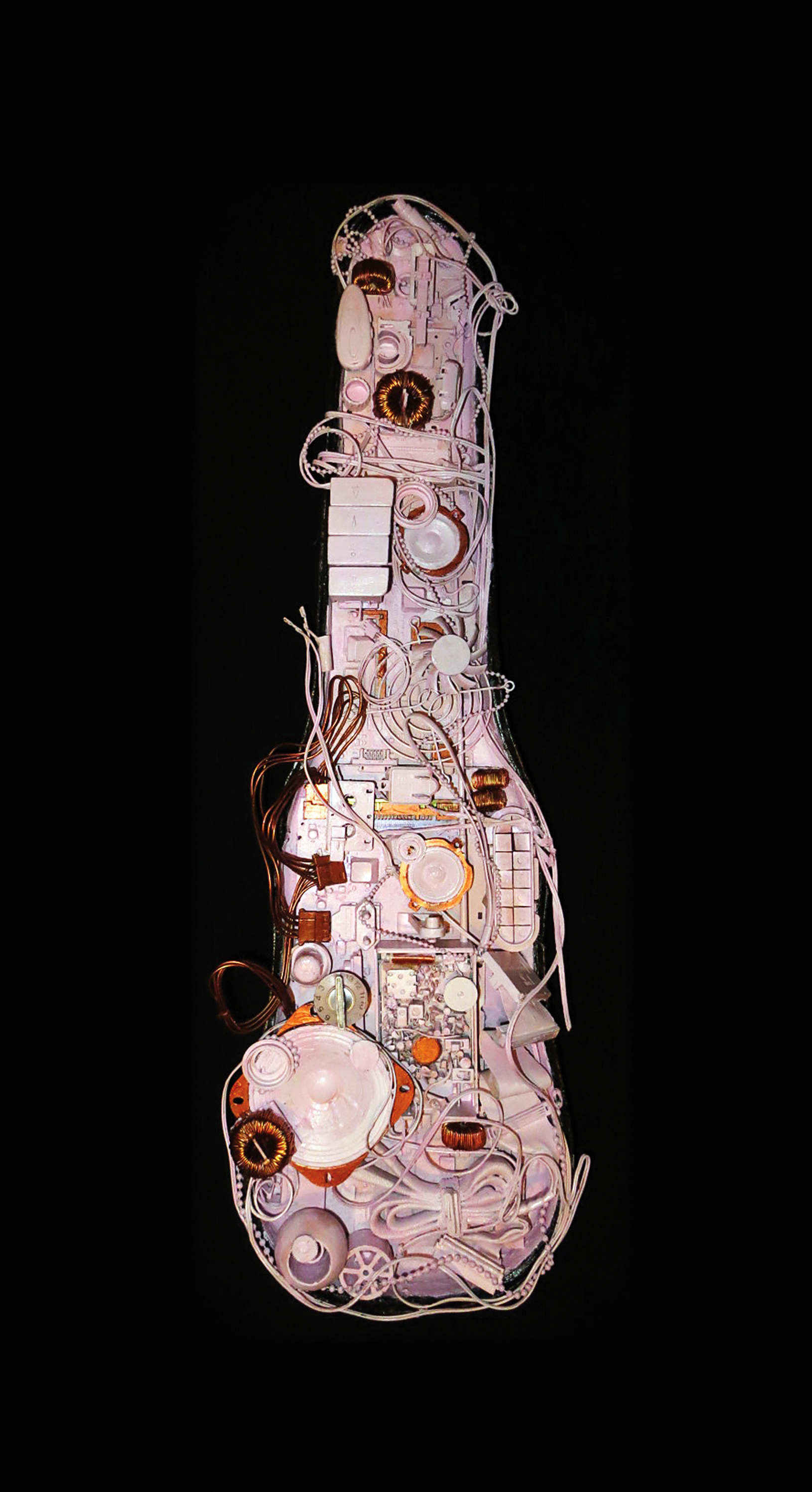Pocket-sized synthesizers and drum machines have become popular in recent years. Mixing several of these portable instruments together is fun and can spark creativity. If you are looking for a budget-friendly mixer with a small footprint for your pocket electronics, you may be interested in the DUDE portable five-channel monophonic mixer from Bastl Instruments. Based in Brno, Czech Republic, Bastl Instruments makes Eurorack modules, small electronic instruments, and DIY kits. The company also champions the DIY ethos with its locally manufactured products, record label, workshops, and events.
The DUDE is a pocket-sized mono mixer measuring 75 x 70 x 45 mm. Its black chassis is made from 2 mm PCB epoxy. This little unit is durable and feels solid in hand. Each of the DUDE's five channels has one +20 dB gain potentiometer and a mute button – no EQ or panning. All inputs and outputs have 1/8-inch mini jacks; perfect for pocket-sized synthesizers and drum machines. Mono or stereo cables can be used on the inputs, however, the manual states that if you're using a stereo cable at the inputs, only the left channel will be heard. The output is a dual mono jack that can drive headphones or enable the use of stereo cables. The DUDE is now in its second generation and comes in a black finish with white graphics and markings – the first version of the mixer was frosted gray with black graphics. To match Bastl's DIY aesthetic, the DUDE comes neatly packaged in uniquely designed wrapping paper, and the box sports a custom print stamped on the cover.
The DUDE runs on four AA batteries or an external center positive power supply. All the devices I own use a center negative power supply. Chances are you'll run into the same issue. I had to scour the Internet for a center positive power supply, as local specialty electronics shops didn’t even have these. I recommend getting one if you don’t want to rely on batteries when recording.
It’s important to note the DUDE is not a traditional mixer and is primarily designed for musicians looking to experiment with signal processing. For instance, you are limited in how much you can turn up the gain before the DUDE turns into a sound processor. The user manual explains when turning up the gain, signals “begin to saturate and start fighting for dominance in the overall mix." The clean stage of the gain is referred to in the manual as the "safe zone." You start to leave the "safe zone" once the gain is turned up somewhere between the nine and twelve o'clock positions (depending on how many channels are in use and how high the gain is on each channel). Once you get passed the "safe zone" the signal will begin to distort or oscillate, changing the sound of the input signal in interesting ways. As you run multiple instruments through the DUDE, you can choose which signal you want to remain in the clean "safe zone" and which signal you want to affect by boosting its gain. Experiment with different instruments on each channel at different gain levels and you will discover a range of new sounds. Check out Bastl's website for video demos!
The company encourages using the DUDE as a "no input mixer," or as the user manual states, a "tone generator" – see musician Sarah Belle Reid's YouTube channel for a great tutorial and explanation on this! Suffice it to say, "no input mixing" is plugging the output of your mixer back into an input. Just be sure to turn up the gain slowly as the slightest adjustment could increase the levels. Try using a splitter on the output jack and plugging the split signals into two channels on the mixer. Interestingly, turning up the gain on the empty channels also manipulated the sound! Of course, all this took a bit of experimentation, but hey, that's the fun of this little mixer!
The cons are minimal when considering the high-quality construction, compact size, and budget-friendly price. It would be great if the DUDE came with its own power supply since a center positive power supply wasn’t easy to find. I'd also prefer the unit to have a light indicating the power button is engaged. The only visual cue for the power mode is that each channel's Mute button will light up when pressed down. To clarify, when the Mute button is pressed, the channel is engaged and the button will light up. When the Mute button is depressed, the channel is muted and the light turns off. This is a bit unintuitive and takes getting used to. But once acquainted with the DUDE, you'll have hours of fun discovering new sounds with a portable device that can be easily routed for recording.




_disp_horizontal_bw.jpg)